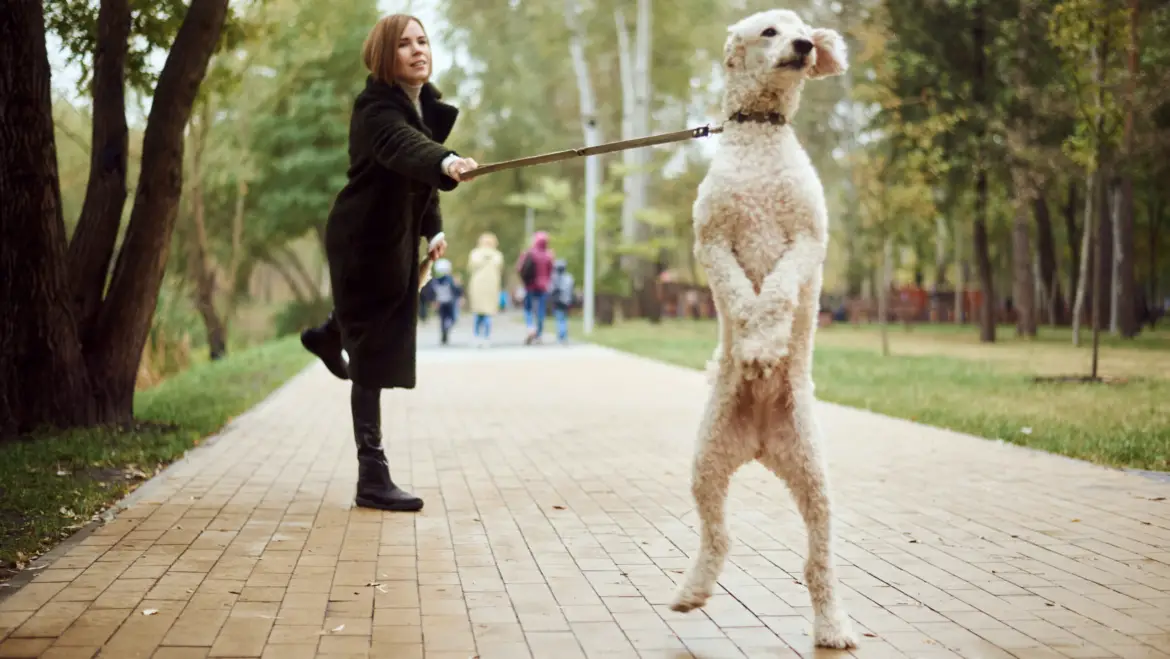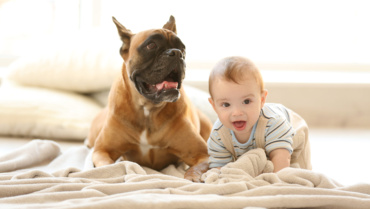Do you dread taking your dog for a walk because they lunge, growl or bark at other dogs? Living with a leash-aggressive dog can be overwhelming and isolating. But don’t worry, you’re not alone! In this post, we’ll explore coping strategies and support resources that will help both you and your furry friend navigate this challenging behavior. From understanding the root causes of leash aggression to tips on training techniques and finding community groups, we’ve got you covered. Let’s dive in!
What is Leash Aggression in Dogs?
Leash aggression is a dog’s aggressive behavior when on a leash, and is often directed towards other dogs or people. This can be a very frustrating problem for dog owners, as it can make walking or exercising their dog difficult or even dangerous. There are several possible causes of leash aggression, and it is important to work with a qualified trainer or behaviorist to determine the root cause of the problem in order to develop an effective treatment plan. In some cases, medication may be necessary to help manage the dog’s aggression.
Identifying the Causes of Leash Aggression
There are many possible causes of leash aggression, and it can be difficult to identify the root cause of your dog’s aggression. It is important to work with a qualified behavior professional to help you identify and address the underlying causes of your dog’s aggression. Some possible causes of leash aggression include:
– Frustration or excitement: When dogs are on a leash, they may become frustrated or excited because they are unable to move freely. This can lead to leash aggression.
– Lack of socialization: Dogs who lack socialization may be more likely to become aggressive on a leash. Dogs who are not used to being around people or other animals may view them as threats.
– Fear or anxiety: Dogs who are afraid or anxious may lash out in an attempt to protect themselves. This type of leash aggression is often seen in dogs who have had negative experiences with people or other animals.
– Possessiveness: Some dogs may become aggressive on a leash because they are possessive of their guardians. These dogs may see other people or animals as a threat to their relationship with their guardians.
Dealing with Leash Aggression: Coping Strategies
Dealing with leash aggression can be difficult and frustrating, but there are some coping strategies that can help. First, it’s important to understand that leash aggression is often caused by fear or anxiety, so punishing your dog is not likely to be effective. Instead, try to create a positive association with being on a leash by making it a positive experience with treats or toys. If your dog is still struggling, you may need to seek professional help from a behaviorist or trainer.
There are also some support resources available that can help you cope with living with a leash-aggressive dog. The American Kennel Club has an informative article on their website about dealing with leash aggression. The Association of Professional Dog Trainers also has a helpful FAQ section on their website about leash aggression. Finally, the Humane Society has an excellent resource page about aggressive dogs that includes information on coping strategies and support resources.
Training Tips for Reducing Leash Aggression
It can be difficult to deal with a leash-aggressive dog, but there are some things you can do to help reduce the aggression. First, it’s important to understand that leash aggression is often caused by fear or anxiety, so you’ll need to be patient and work slowly with your dog. Here are some tips:
-Start by getting your dog used to wearing a collar and leash. Let them wear it around the house for short periods of time at first, gradually increasing the amount of time they wear it.
-When you’re ready to start walking, go slowly at first. Let your dog stop and sniff as much as they want, and praise them when they stay calm.
-If your dog starts to get agitated, try using a shorter leash or walking in a different direction. If all else fails, you may need to consult a professional trainer for help.
Safety Guidelines When Walking Your Dog
When walking your dog, you should always be aware of your surroundings and be cautious of potential hazards. Be sure to keep your dog on a leash at all times and avoid letting them off the leash in areas where they may come into contact with other dogs or people. If you are unsure about an area, it is best to err on the side of caution and find a different route.
You should also be aware of your own body language and energy level when walking your dog. Dogs are very intuitive creatures and can pick up on our cues. If we are tense or anxious, they will likely mirror those emotions. It is important to stay calm and relaxed when walking your dog, even if they are exhibiting some leash aggression.
If you do come across another dog while out walking, do not approach them unless you are absolutely sure that it is safe to do so. If your dog begins to show signs of aggression, such as growling or lunging, calmly but quickly move away from the situation. Never punish your dog for exhibiting aggressive behavior as this will only make the problem worse.
If you have any concerns about your dog’s leash aggression, please consult with a certified behaviorist or trainer for guidance. There are also many excellent resources available online and in print that can provide support and advice.
Support Resources for Dog Owners with Leash Aggression Issues
If you have a dog with leash aggression issues, you’re not alone. Many dog owners struggle with this problem. But there are some things you can do to help your dog feel more comfortable on a leash and reduce the chances of aggression.
One of the best things you can do is socialize your dog from an early age. This means exposing them to as many different people, animals, and situations as possible. The more they’re exposed to, the less likely they are to feel threatened by new things.
You should also avoid using a choke chain or prong collar on your dog. These can actually make aggression worse by causing your dog pain and fear. Instead, use a gentle leader or harness that fits properly and doesn’t put any pressure on your dog’s neck.
If you’re struggling with leash aggression, there are plenty of resources out there to help you. There are books, websites, and even trainers who can help you learn how to better manage your dog’s behavior. So don’t give up hope – help is available!
Conclusion
Living with a leash-aggressive dog can be very challenging, but it doesn’t have to be. With the right coping strategies and support resources, you can help your beloved pup overcome their aggression and create a happier home environment for everyone. Whether you seek professional guidance or prefer petting tips from experienced owners online, there are many options available to ensure that both you and your pup find success in living together peacefully. Remember: with enough love and patience, anything is possible!





2 Comments
Lorem ipsum dolor sit amet, consectetur adipiscing elit, sed do eiusmod tempor incididunt ut labore et dolore magna aliqua. Ut enim ad minim veniam, quis nostrud exercitation ullamco laboris nisi ut aliquip ex ea commodo consequat.
Duis aute irure dolor in reprehenderit in voluptate velit esse cillum dolore eu fugiat nulla pariatur. Excepteur sint occaecat cupidatat non proident, sunt in.
Add Comment